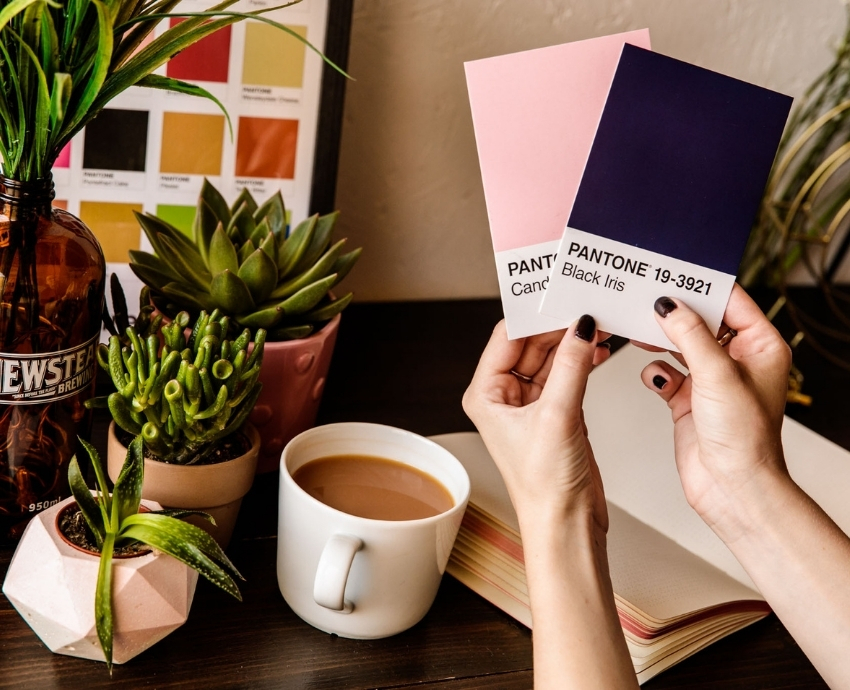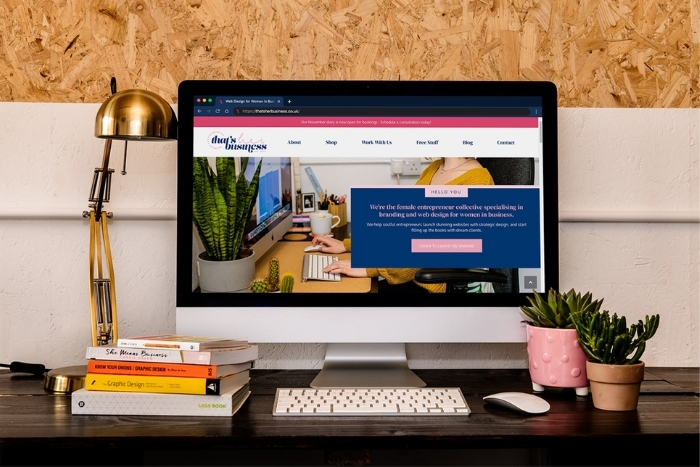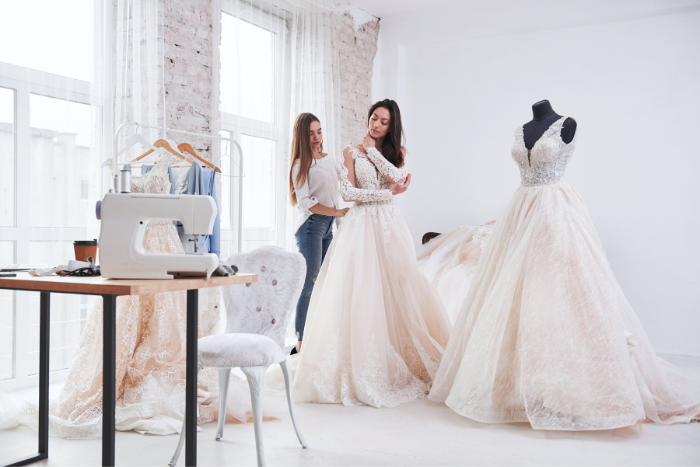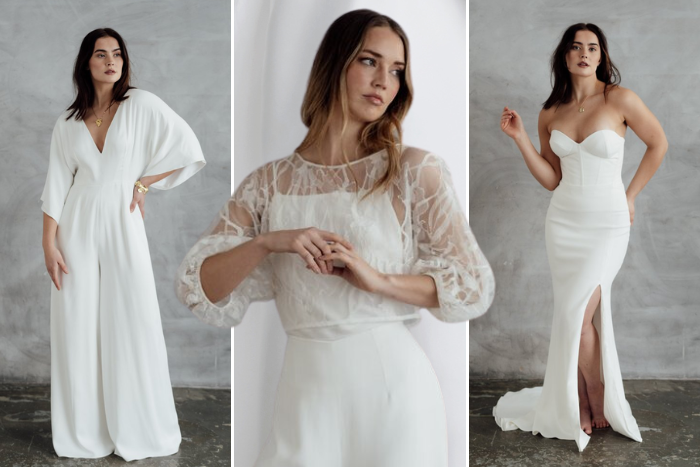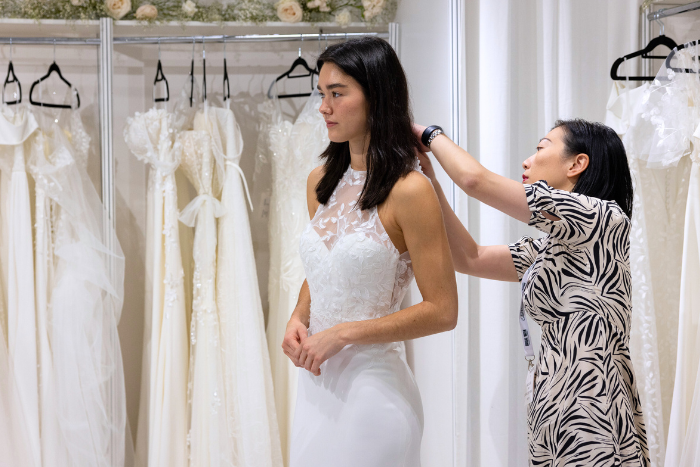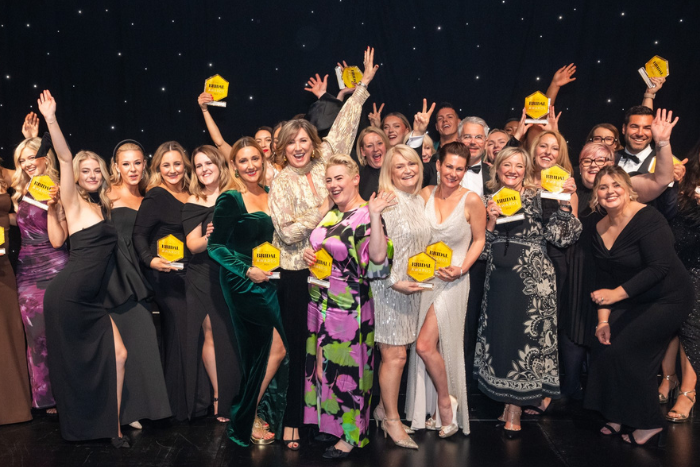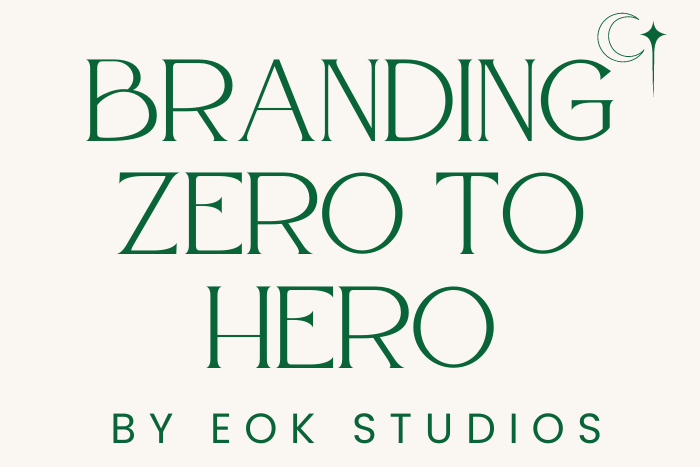Logo design: how to ensure it represents your business
Gemma Thirsk, founder of That’s Her Business, discusses the importance of a strong logo when establishing your brand identity and talks us through the dos and don’ts of logo design.
How important is a logo when establishing your boutique’s brand identity?
Your brand identity is made up of the tools and elements you use to help guide how your customers think and feel about you. It includes your logo and its different variations, but it also has the name of your boutique, your tagline, typefaces, colour palette, the voice your boutique uses, and overall style. These individual bits and pieces are significant because together, they make up the complete picture of what it’s like to shop and work with you.
As an individual element, your logo itself is crucial. It’s kind of like a name card at a wedding – you know the seat you’re looking at is yours because your name is on it. Everything that has your logo on it is easily recognisable as yours and stands out from the rest.
A well-designed logo will allow you to place it, or a variation of, quite literally anywhere. Think outside of your boutique, on champagne flutes, repeated as a packaging pattern, even on teeny tiny labels inside wedding dresses. This means the possibilities for increasing awareness of your boutique are endless!
Where should you start when designing a logo?
Your logo design process begins way before you start thinking about logo design. By this, I mean start with your strategy! Nailing your brand strategy is the first step towards designing your logo and the rest of your brand identity. You’ll need to fully understand your business and everything it stands for, so you can effectively communicate this to your customers through visuals.
Think about your values and your purpose. What does your boutique stand for? Why do your customers enjoy the experience of working with you? Why do you enjoy your work? What does your boutique value the most?
During this process, you’ll also want to get a concrete understanding of who your target customers are and how you want them to feel when they interact with you. That way, you can understand the type of visuals you’ll need to help communicate these feelings. Base your brand strategy around emotions, and you’re onto a winner. It’s worth mentioning here that your brand strategy will be at the centre of everything you do as a boutique and not just your logo design process!
Once you’ve got your strategy down, you can start to think about your logo design. I would always recommend working with a professional designer for this part. Understanding what makes good design is like speaking another language! Did you know that designers even carefully design the negative (empty) space around your logo so that everything comes together perfectly? Colour psychology is massively important too, so best to get some advice at least.
What should you be including in your logo set?
A professional logo set will include a few different versions of your logo. You’ll need these versions:
Wide / Landscape
This is a version of your full logo that fits in spaces that are wider than they are tall. This could be the main version of your logo that you use in most places.
Tall / Portrait
This is a version of your full logo that fits in spaces that are taller than they are wide. This could also be the main version of your logo that you use in most places but choosing one main version is best.
Square / Circle
This is a version of your logo that fits in both square and circular spaces. Often these variations are designed as badges, emblems, or stamps. This may not include your full logo but will represent it cohesively.
Small / Icon
This is the smallest version of your logo for use in not so obvious places or when it’s hard to fit anything else - something like the Bridal Buyer icon at the top of your web browser. Often this will include initials or an icon only.
For each of these logo variations, you can create a full-colour version along with colourways for both light and dark backgrounds, as well as one colour use (e.g. all black or white). When you have all these variations, you’ll have the perfect set to apply to any situation whilst remaining on-brand!
What is the best way to brief a designer to ensure they create a logo that speaks to your brand identity?
Every designer has their own way of approaching the brief stages. We get together with our clients (via Zoom these days!) and start with discovery. Discovery includes a workbook and covers the critical elements of your brand strategy.
We’ll talk about target customers, end goals, your brand’s values, voice and personality. We then use this information to build the brief together. Doing it this way is the best way for us to get inside of your mind and see what you’re seeing, but also see what your customers see too!
If you’re approaching a designer to talk about your logo design, be prepared to talk about far more than just logo design. Ensure you give all the juicy information about who the design is for and how it will be used. Don’t forget to keep an open mind and let your designer get creative too!
What are the dos and don’ts when it comes to designing a logo?
Legibility
- Do make sure everything is easy to read and understand by everyone. Try printing your logo out and sticking it on your wall to make sure you can read it easily
- If using a handwritten font, don’t use something super scrawly that is difficult to make out
Hierarchy
- Do use type hierarchy to make sure the name of your boutique is the first bit of text the eye drawn to
- Don’t let your tagline become more prominent or more obvious than the name
Minimum Size
- Do figure out the minimum size you can display your logo, and don’t go any smaller than this! No one can read fuzzy letters that look like dots
Space
- Wherever you are placing your logo, do make sure you allow plenty of room around the edges for it to stand out and look its best
- Don’t bunch up items or add a frame around your logo, so it’s hard to pick out amongst the crowd
Contrast
- Do make sure your logo has enough contrast against its background, so it shows up clearly
- Don’t make people squint to read the details
In the end, excellent logo design is simple and easy to understand. Don’t overcomplicate it!
Can you give any examples of strong brand logos?
The Ancoats Florist has beautiful branding. The handwritten logo is easy to read yet an elegant representation of the personal service you receive. Love it.
Remember, keep your logo clear and recognisable, and then build up the rest of your brand identity around it to keep everything “on brand”. Happy designing!
